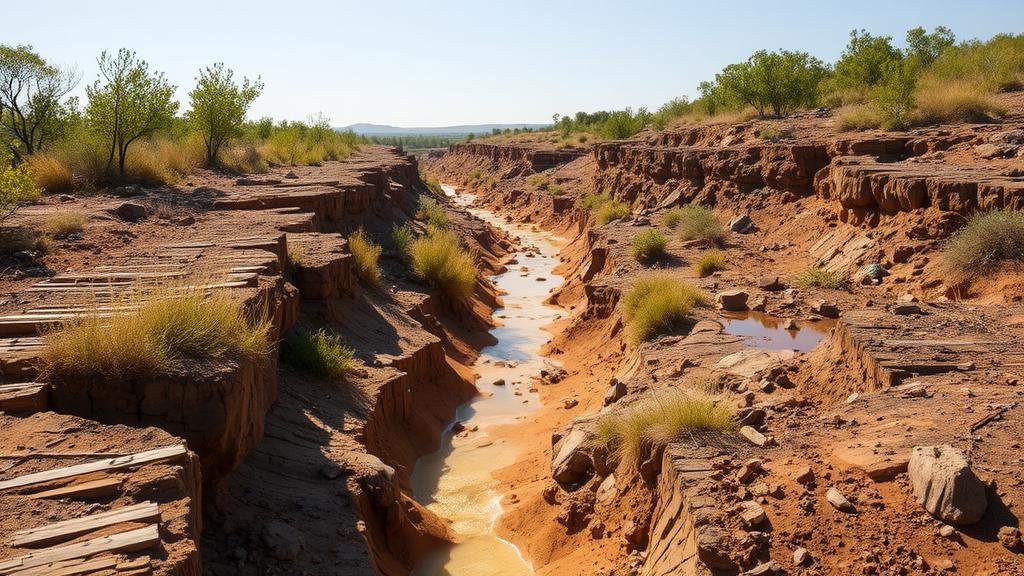Exploring the Tertiary Channels: Unearthing Prehistoric Gold Streams
Exploring the Tertiary Channels: Unearthing Prehistoric Gold Streams for Rockhounds and Mineral Collectors
The hunt for precious minerals and gemstones is a thrilling adventure that has captivated enthusiasts known as rockhounds for generations. Among these treasures are the hidden veins of gold that can be found in the Tertiary channels–geological formations that date back millions of years. This article aims to explore these ancient channels, their significance to mineral collectors, and techniques to effectively seek out gold deposits amidst the sedimentary layers.
Understanding Tertiary Channels
Tertiary channels refer to river systems that were active during the Tertiary period, approximately 66 million to 2.6 million years ago. e ancient waterways played a crucial role in the transportation and deposition of mineral-laden sediments. As rivers flowed over time, they carved out channels and basins, which now host remnants of the once-prosperous gold deposits.
To grasp the importance of Tertiary channels, consider that many significant gold finds have occurred in regions once covered by such waterways. The famous Mother Lode of California, for example, owes its existence to Tertiary river deposits that facilitated the concentration of gold through natural erosion processes.
The Geology Behind Gold Deposits
The formation of gold deposits is primarily influenced by the geological conditions present during the Tertiary period. Gold is often found in a variety of settings, including:
- Alluvial Deposits: These occur when gold particles are transported by water, settling in stream beds, often in areas where the velocity of water decreases.
- Weathered Rock Deposits: As rocks break down, gold can be released and transported downstream, potentially ending up in Tertiary channels.
- Fluvial Systems: The dynamic movement of water in these ancient rivers created concentrated areas of gold through hydraulic sorting.
Research indicates that gold typically concentrates in areas with lower sedimentation rates, notably behind boulders or inside river bends, creating prime spots for prospecting.
Effective Techniques for Gold Prospecting
Rockhounds and mineral collectors can employ various methods to unearth gold from Tertiary channels. Here are some effective techniques:
- Panning: Utilizing a simple gold pan, collectors can sift through river sediments to find flecks of gold. Its paramount to practice in locations known for gold deposits.
- Metal Detecting: High-quality metal detectors designed for mineralized ground can help locate gold hidden deeper below the surface.
- Crevicing: This method involves using tools to flush out material from cracks and crevices in bedrock or sediment, where gold may be trapped.
When exploring Tertiary channels, utilizing a combination of these techniques can increase the likelihood of a successful find. Plus, it is important to adhere to local regulations regarding mining activities to ensure sustainable practices.
Practical Tips for Rockhounds
Successful gold prospecting requires patience and preparation. Here are essential tips for rockhounds:
- Research: Familiarize yourself with the geology of the area you plan to explore. Mapping resources that highlight past gold finds can guide your search.
- Join Local Clubs: Networking with fellow rockhounds can provide insights and tips based on firsthand experience. Clubs often organize group outings to promising locations.
- Stay Safe: Always prioritize safety by wearing appropriate gear, bringing first aid supplies, and keeping informed on local wildlife or environmental conditions.
The Future of Tertiary Channel Prospecting
The continued interest in Tertiary channels provides a platform for new technologies and innovations in prospecting. With advancements in geological mapping and remote sensing, collectors can leverage these tools to identify potential mineral-rich sites with greater accuracy. As interest grows, so does the need for responsible mining practices to preserve the integrity of these historical sites.
Conclusion: Your Next Adventure Awaits
Unearthing gold from Tertiary channels remains a captivating pursuit for rockhounds and mineral collectors alike. By understanding the geological context, employing effective prospecting techniques, and staying informed about the latest advancements in technology, collectors can maximize their chances of discovery. Whether youre a novice or an experienced collector, the thrill of uncovering prehistoric gold streams is an adventure worth undertaking.
So, gear up, educate yourself, and embark on your next expedition into the annals of geological history–your next precious find could be just around the bend.



